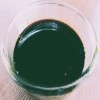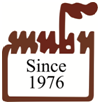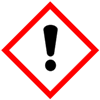Peru Balsam or Peruvian Balsam or Balsam of Peru FCC Food Grade Manufacturers, with SDS GHS MSDS Sheet |
Supplier, Manufacturer, Exporter of Peru Balsam or Peruvian Balsam or Balsam of Peru FCC Food Grade, Muby Chemicals of Mubychem Group, established in 1976, is the original manufacturers of Specialty Chemicals, Pharmaceutical Excipient, Fragrance Food & Flavor chemicals, Reagent Grade Chemicals, Shale Gas Fracturing Chemicals in India. Mubychem Group has several manufacturing facilities spread across Western India and world wide contacts and toll manufacturers. We are exporting globally to countries like USA, Canada, Europe, UAE, South Africa, Tanzania, Kenya, Egypt, Nigeria, Cameroon, Uganda, Turkey, Mexico, Brazil, Chile, Argentina, Dubai, Korea, Vietnam, Thailand, Malaysia, Indonesia, Australia, China, Germany, France, Italy Portugal, Bangladesh, etc. The products are offered as per required specifications and in correct shape and size in mm or meshs or microns as specified by the buyer. The participating units have one or more accreditations like FDA - cGMP and GLP approval, ISO-9001 Certified, "REACH" Registered, ISO-14001, ISO/IEC 17025, ISO-22000, FSSC 22000, ISO 45001, Kosher Certified, Halal Certified, HACCP, FSSAI. We offer Commercial Pure & IP BP EP Ph Eur USP NF JP FCC Food Grade Analytical Reagent Grades of Chemicals |
| Bookmark this Web Site -- or -- Email This Page Info to a Colleague or Yourself |
Search our website here:







Peru Balsam or Peruvian Balsam or Balsam of Peru CAS Number 8007-00-9, EINECS EC Number: 232-352-8, FEMA NO. 2117 and 2116, Molecular Formula: yy, Molecular Weight: yy, HS Code 33012990
How big is your requirement or how small
We serve it all.
Specifications, Safety Data Sheet, Manufacturing process details, Wholesale retail buy sell prices, Uses etc available on line in these pages for Peru Balsam or Peruvian Balsam or Balsam of Peru.
For SDS MSDS Sheet Click
SDS MSDS Sheet of Peru Balsam or Peruvian Balsam or Balsam of Peru Manufacturers
Peru Balsam
Peruvian Balsam or Balsam of Peru FCC Food Grade Pure Suppliers

Peru Balsam or Peruvian Balsam or Balsam of Peru is a resin obtained from the Myroxylon balsamum tree, native to Central America. It's used in various products, including cosmetics, perfumes, and even some medicinal applications. It's also known as Peruvian balsam and has a history of use as a flavoring agent in food. Peru balsam might prevent bacterial growth and kill tiny insects (mites) that cause a skin condition.
General Properties and Specifications of Peru Balsam or Peruvian Balsam or Balsam of Peru:
Appearance: Brown to Dark Brown clear oily liquid.
Odor: Rich, sweet, cinnamic, vanilla-Iike.
Boiling Point: 314C.
Relative density: about 1.1
Solubility: Insoluble in water.
Balsam Peru Oil FCC Food Grade:
CAS: 8007-00-9
DESCRIPTION
Balsam Peru Oil occurs as a yellow to pale brown, slightly viscous liquid having a sweet, balsamic odor. It is obtained by extraction or distillation of Peruvian Balsam obtained from Myroxylon pereirae Royle Klotzsche (Fam. Leguminosae). Occasionally, crystals may occur within the liquid. It is soluble in most fixed oils, and is soluble, with turbidity, in mineral oil. It is partly soluble in propylene glycol, but it is practically insoluble in glycerin.
Function: Flavoring agent.
REQUIREMENTS
Identification: The infrared absorption spectrum of the sample exhibits relative maxima at the same wavelengths as those of a typical spectrum as shown in the section on Infrared Spectra, using the same test conditions as specified therein.
Acid Value: Between 30 and 60.
Angular Rotation: Between –1° and +2°.
Ester Value: Between 200 and 225.
Refractive Index: Between 1.567 and 1.579 at 20°.
Solubility in Alcohol: Passes test.
Specific Gravity: Between 1.095 and 1.110.
Packaging and Storage: Store in a cool place protected from light in full, tight containers that are made from steel or aluminum and that are suitably lined.
For Original Monographs of IP Indian Pharmacopoeia EP Ph Eur European Pharmacopoeia BP British Pharmacopoeia USP US Pharmacopoeia FCC Food Grade product, please check with the respective web-pages or books.
We also manufacture and supply as under:
Manufacturers:
MUBY CHEMICALS
Ambernath Mumbai, Ankleshwar Gujarat, India
TEL: (OFFICE) +912223770100, +912223726950
Current Date Time in India GMT+5:30
e-mail: info@mubychem.com
USA, Canada, Mexico and other American
neighbouring buyers may
e-mail: us@mubychem.com
Call toll-free 1-877-682-9243 (1-877-MUBYCHEM)

Copyright and Usual Disclaimer is Applicable.
Last
27 April, 2025




Exporters to USA Canada UAE Europe South Africa Tanzania Kenya Uganda Egypt Nigeria Turkey Mexico Brazil Argentina Chile Dubai etc.
Global or International Suppliers, Exporters, Importers, Manufacturers
I shall pass through this world, but once. If therefore, there is any good that I can do, or if there is any favor that I can show to a fellow human being, let me do it now. Let me not defer or neglect it. For I shall not tread this way again
Peru Balsam or Peruvian Balsam or Balsam of Peru Oil SDS, Safety Data Sheet
MSDS Sheet, Material Safety Data Sheet 27-April-25
1. Product Identification
Product Name & Other Names: Peru Balsam or Peruvian Balsam or Balsam of Peru Oil.
CAS No.: 8007-00-9
EINECS EC Number: 232-352-8
Relevant uses and uses advised against (if any): Industrial Manufacturing Use.
Supplier: As per letterhead.
2. Hazards Identification
GHS, Globally Harmonized System Classification in accordance with 29 CFR 1910
Classification according to Regulation (EC) No 1272/2008
Skin corrosion/irritation Category 2, H315
Labeling according to Regulation (EC) No 1272/2008 [CLP]
GHS Label Elements  Irritant |
Signal Words: Warning
Hazard statements:
H315: Causes skin irritation.
Precautionary statements:
P262: Do not get in eyes, on skin, or on clothing.
P264: Wash skin thoroughly after handling.
P280: Wear protective gloves/protective clothing/eye protection/face protection.
P302+352: IF ON SKIN: Wash with soap and water.
P304+P340: IF INHALED: Remove victim to fresh air and keep at rest in a comfortable position for breathing.
P305+351+338: IF IN EYES: Rinse cautiously with water for several minutes. Remove contact lenses if present and easy to do – continue rinsing.
P332+313: If skin irritation occurs: Get medical advice/attention.
P337+P313: If eye irritation persists: Get medical advice/ attention.
P360: Rinse immediately contaminated clothing and skin with plenty of water before removing clothes.
P362: Take off contaminated clothing and wash before reuse.
Classification according to EU Directives 67/548/EEC or 1999/45/EC:
Hazard symbol:
Xi = Irritant.
R-phrases:
R38 Irritating to skin.
3. Composition/Information on Ingredients
Product Name & Other Names: Cedar Wood Oil or Cedarwood Oil.
CAS No.: 8000-27-9
EINECS EC Number: 294-939-5
4. First Aid Measures
Always seek medical advice after the first aid treatment.
Inhalation: Allow the victim to rest in a well-ventilated area. Seek immediate medical attention.
Ingestion: Give several glasses of water to drink to dilute. If large amounts were swallowed, get medical advice.
Skin Contact: After contact with skin, wash immediately with plenty of water. Gently and thoroughly wash the contaminated skin with running water and non-abrasive soap. Be particularly careful to clean. folds, crevices, creases, and groin. Cold water may be used. Cover the irritated skin with an emollient. If irritation persists, seek medical attention.
Eye Contact: Immediately flush eyes with plenty of water for at least 15 minutes, lifting lower and upper eyelids occasionally. Get medical attention immediately.
5. Fire Fighting Measures
Fire: Not considered to be a fire hazard though it will burn at high temperatures.
Explosion: Not considered to be an explosion hazard.
Fire Extinguishing Media: Use water spray, alcohol-resistant foam, dry chemical, or carbon dioxide. Use means suitable for extinguishing surrounding fire.
Special Information: In the event of a fire, wear full protective clothing and NIOSH-approved self-contained breathing apparatus with full face piece operated in the pressure demand or other positive pressure mode. At high temperatures under fire conditions, it may produce toxic or irritating fumes. Fire-extinguishing work is done from the windward and the suitable fire-extinguishing method according to the surrounding situation is used. Uninvolved people should evacuate to a safe place.
6. Accidental Release Measures
Personal precautions, protective equipment, and emergency procedures: Avoid breathing dust/fumes/gas/mist/vapors/spray. Use individual protective equipment (waterproof boots, suitable protective clothing, safety glasses, etc.). Restrict unprotected personnel from the area. Prevent any contact with hot surfaces. Do not approach facing the wind. Do not touch the spilled material.
Environmental precautions: Do not let the product enter drains, soil, or water sources.
Methods and materials used for containment Clean-up procedures and Storage:
Small Spill: Use appropriate tools to put the spilled solid in a convenient waste disposal container. Finish cleaning by spreading water on the contaminated surface and dispose of according to local and regional authority requirements.
Large Spill: Do not inhale dust, vapors, mist, or gas. Avoid dust formation. Contain spilled material. Cover with an inert, non-combustible absorbent material, (e.g., sand, earth, diatomaceous earth, vermiculite). Use a shovel to put the material into a convenient waste disposal container. Finish cleaning by spreading water on the contaminated surface and allowing evacuation as per law.
Fire Protection: Keep away from ignition sources and naked flame.
7. Handling and Storage
Precautions for safe handling: Apply according to good manufacturing and industrial hygiene practices. Ensure proper ventilation. In case of insufficient ventilation, wear suitable respiratory equipment. Wash thoroughly after handling it. Do not drink, eat, or smoke while handling. Avoid contact with skin, eyes, and clothing. Minimize dust generation. Avoid breathing dust/fumes/gas/mist/vapors/spray. Keep the container tightly closed. Avoid ingestion and inhalation. Use individual protective equipment (waterproof boots, suitable protective clothing, safety glasses, etc.). Prevent any contact with hot surfaces.
Conditions for safe storage, including any incompatibilities: Store in cool, dry, and ventilated area away from heat sources and protected from sunlight in tightly closed original container. Keep air contact to a minimum. Store protected from heat, sparks and ignition sources and incompatible materials. Avoid contact with skin and eyes. Avoid inhalation of dust/mist/vapor. Do not store with incompatible materials like strong oxidizing agents, strong acids, alkalis.
Fire Protection: Keep away from ignition sources and naked flames.
8. Exposure Controls/Personal Protection
Airborne Exposure Limits: Contains no substances with occupational exposure limit values.
Ventilation System: A system of local and/or general exhaust is recommended to keep employee exposures as low as possible. Local exhaust ventilation is preferred because it can control the emissions of the contaminant at its source, preventing dispersion of it into the general work area. Please refer to the ACGIH document, Industrial Ventilation, A Manual of Recommended Practices, most recent edition, for details.
Personal Respirators (NIOSH Approved): For conditions of use where exposure to the dust or mist is apparent, a half-face dust/mist respirator may be worn. For emergencies or instances where the exposure levels are not known, use a full-face positive-pressure, air-supplied respirator.
Skin Protection: Wear protective gloves and clean body-covering clothing.
Eye Protection: Use chemical safety goggles. Maintain eye wash fountain and quick-drench facilities in work area.
Other Control Measures: Maintain good housekeeping in work area. Handle in accordance with good industrial hygiene and safety practice. Wash hands after handling.
9. Physical and Chemical Properties
Appearance: Brown to Dark Brown clear oily liquid.
Odor: Rich, sweet, cinnamic, vanilla-like.
Odor threshold: Not available.
pH: Not available.
Relative density: around 1.1.
Boiling Point: 314C.
Melting Point: - Not available.
Flash point: Not available.
Auto-ignition temperature: Not available.
Decomposition temperature: Not available.
Upper/lower flammability or explosive limits: Not available.
Vapor pressure: Not available.
Vapor density: Not available.
Evaporation rate: Not available.
Flammability (solid, gas): Not available.
Partition coefficient: n-octanol/water: Not available.
Solubility: Insoluble in water
Viscosity: Not available.
10. Stability and Reactivity
Stability: Stable under ordinary conditions of use and storage.
Hazardous Polymerization: Will not occur.
Incompatibilities: Oxidizing agents.
Conditions to Avoid: Heat and incompatibilities.
11. Toxicological Information
Toxicity to Animals:
LD50 Oral – Rat >5,000 mg/kg.
LD50 Dermal – Rabbit >5,000 mg/kg.
Carcinogenicity: No component of this product present at levels greater than or equal to 0.1% is identified as possible or confirmed human carcinogen by IARC, ACGIH, OSHA and NTP.
Teratogenic Effects: Not available.
Mutagenic Effects: Not available.
Developmental Toxicity: Not available.
Reproductive Effects: No information available.
12. Ecological Information
Toxicity to fish: No information available.
Persistence and Degradability: No information available.
Mobility: No information available.
Bioaccumulation/ Accumulation: No information available.
Results of PBT and vPvB assessment: No data available for assessment.
13. Disposal Considerations
Whatever cannot be saved for recovery, or recycling should be managed in an appropriate and approved waste disposal facility. Processing, use or contamination of this product may change the waste management options. State and local disposal regulations may differ from federal disposal regulations. Dispose of containers and unused material in accordance with legal requirements.
14. Transport Information
DOT USA, TDG Canada & ADR/RID Europe: Not dangerous goods.
IMDG/IMO: Not dangerous goods.
IATA/IMO: Not dangerous goods.
15. Regulatory Information
USA:
California Proposition 65: Not listed.
SARA 311/312 Hazards: See section 2.
Section 16 - Additional Information
European Labeling in Accordance with EC Directives:
H315: Causes skin irritation.
Classification according to EU Directives 67/548/EEC or 1999/45/EC:
Hazard symbol:
Xi = Irritant.
R-phrases:
R38 Irritating to skin.
Disclaimer:
**************************
Our company provides this MSDS sheet in good faith but makes no representation as to its comprehensiveness or accuracy. This SDS sheet is intended only as a guide to the appropriate precautionary handling of the material by a properly trained person using this product. The above information has been compiled from various sources and has the possibility of discrepancy and being out-dated information. Individuals receiving the information must exercise their independent judgment and do further search in determining its appropriateness for a particular purpose. In no case shall our company be liable to loss or damages by the product user.
**************************















